‘The house we bought for £20,000’
Country Life meets some property owners who bought their houses for relatively modest sums, and are reselling for millions
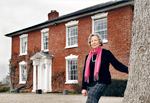

The figures are dizzyingly high: houses bought for £20,000 in the 1950s and 1960s are now on the market for several millions. In some cases, the increase in their nominal value is as high as 26,090%. Of course, this figure needs to be put into the context of general inflation, which was rampant in some decades. Even so, it looks like people who bought their houses in the middle of the last century made the investment of a lifetime.
Research by Savills shows that average property values saw a real growth of between 39% and 71% in every decade between 1960 and 2010, except in the 1990s, when they fell by 14%. On average, the total increase in real terms between 1960 and 2010 was a staggering 335%-and much higher for the most sought-after properties. As Marcus Dixon of Savills explains, had there been no real increase in property value, a house like Swallowcliffe Manor, bought in 1969 for £20,000, would be worth £256,974 today. Instead, it's on the market for £3.5 million.
Even taking into account the fact that people spent money on updating their properties, which they often bought as wrecks and are now selling in walk-in condition, these figures certainly make a strong case for long-term property investments.
Swallowcliffe Manor
near Shaftesbury, Wiltshire
Owned by Jeremy Leasor
Bought for £20,000 in 1969, now on the market for £3.5 million through Knight Frank (020-7861 1080; www.knightfrank.com)
Sign up for the Country Life Newsletter
Exquisite houses, the beauty of Nature, and how to get the most from your life, straight to your inbox.
Jeremy Leasor's mother, Joan, fell in love with 16th-century Swallowcliffe Manor after spotting an advert in Queen magazine while having her hair cut. But, back in the late 1960s, the eight-bedroom, Grade II-listed property didn't look as inviting as it does now. ‘It hadn't been decorated since the 1930s. The kitchen was a grim mauve, and the rest of the house was ochre-it looked unspeakable,' says Mr Leasor.
To add to the dreary interior, enormous trees-some of which were taller than the house-blocked the light through the mullion windows. ‘It was really gloomy. And once all the old contents had been removed, the place looked huge. When they got the keys, my parents sat in the drawing room and thought "What have we done?".'
After they installed new wiring and plumbing, chopped down trees and restored the roof and honey-coloured limestone and ashlar stonework, the property's charm was revealed. ‘The difference cutting down the trees made was extraordinary,' explains Mr Leasor, who says that he and his three brothers used to love crawling in and out of the hatches in the attic rooms. The property's 17½ acres also enabled them to indulge their passion for motorbikes and cars.
But, despite their affection for the house, the death of their parents has forced a reluctant sale. ‘It will be a wrench to let it go, but it's the right thing to do.'
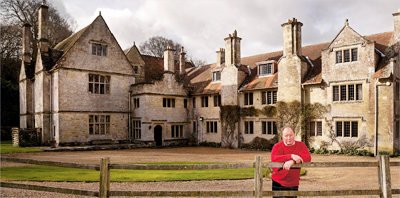
Seckford Hall
Woodbridge, Suffolk
Owned by Michael Bunn
Bought for £21,000 in 1951. The property has recently been valued at £5.5 million
Glancing through the glossy brochure, it's difficult to believe that this glamorous, 32-bedroom country-house hotel once faced demolition. However, the photographs of Seckford Hall that were published in the January 15, 1910 issue of Country Life (below) show just how rundown the Tudor property had become.
Most probably built between 1541 and 1550, the three-storey building was saved from destruction when Sir Ralph Harwood, financial secretary to George V, purchased it in May 1940. Like so many other country houses, it was commandeered by the army during the Second World War, but Sir Ralph commenced his restoration plan in 1946, completing its metamorphosis into a hotel in 1949.
In 1951, Michael Bunn's father, Harold, a former chemist, and his wife, Lenna, purchased the property, and the family has run it as a hotel-which last year turned over more than £2 million-ever since. ‘It's difficult to describe what it's been like to live here for more than 60 years it's home,' says Mr Bunn, who used to spend hours flying model aeroplanes around the grounds as a child.
However, like many couples approaching retirement, Mr Bunn and his wife, Christine, are considering how long they want to continue living and working at Seckford. ‘We have to take stock of our situation and face the fact that we're getting older,' Mr Bunn explains pragmatically. ‘Do we carry on living here until we drop, or do I take a realistic approach and let go of the reins?'
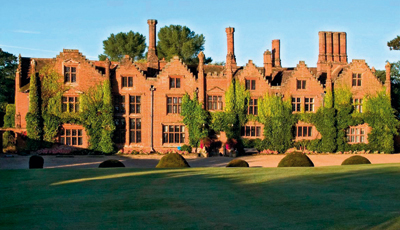
Ford House
Wangford, near Southwold, Suffolk
Owned by Christopher and Mary Hopkins
Bought for £9,500 in 1971, now on the market for £1.1 million through Bedfords (01728 454505; www.bedfords.co.uk)
‘It was really decrepit-the windows were rotten, the roof had collapsed in places and the garden was a jungle right up to the back door,' says Dr Christopher Hopkins as he recalls the original state of the elegant, Georgian-fronted house that he and his wife, Mary, have lived in for the past 40 years. Although he was comfortable in a grand residence on Southwold's North Parade that also housed his surgery, Dr Hopkinson had long hankered after a big country property.
When, in the 1960s, the Government agreed to subsidise doctors' premises, the former GP seized the chance to move his surgery to the High Street and search for an idyllic property in which to live outside of town.
‘I found it completely by chance,' he explains. ‘One day, I saw this lovely house in the village of Wangford. I knew that a widow lived there, and I had an intuition about it, so I knocked on the door and cheekily asked whether it might ever be for sale. It turned out that it was going on the market the very next day.'
So the Hopkinses began their 11-year, £10,000 project to breathe life back into the decaying house. Their to-do list included adding to the one loo upstairs, putting in central heating and French windows, and bulldozing the garden. ‘It's been a lovely family home, but we always said that, once we got into our dotage, we'd pull up anchor and go back to Southwold,' says Dr Hopkins.
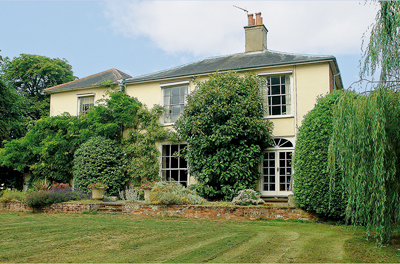
Nash Court
Boughton-Under-Blean,
Faversham, Kent
Owned by Maggee Johnson
Bought for £4,000 in 1947, now on the market through Strutt & Parker for £2.5 million (01227 451123; www.struttandparker.com)
Perched at the top of an incline, 18th-century Nash Court enjoys commanding views over its own land. Maggee Johnson's father, Tom Redsell, acquired the surrounding 150 acres of farmland before the Second World War, but had to wait until the army vacated the substantial, Grade II*-listed red-brick mansion before he could secure it.
‘Fortunately, although the soldiers had had open fires in the hallway-and had engraved a horse on the mantelpiece of the Adam fireplace in the billiard room-there was no structural damage,' says Mrs Johnson.
The Redsells set about restoring the 11-bedroom home, with its generous-sized rooms, many of which feature bolection-moulded, raised and fielded panelling. ‘My parents employed a really good craftsman, who repainted all the John Nash ceilings, remoulding and replacing any missing bits.'
‘It's a wonderful party house,' she adds. ‘My father used to host lots of shooting parties. It's a house that comes alive with people.' Like her parents, Mrs Johnson left her own mark on Nash Court. ‘When I was a teenager, I repainted the cellar, installed a bar and called it the Cavern Club. And I put graffiti on the walls.'
Although Mrs Johnson and her brother Tony have opted to keep the farm, putting the house on the market wasn't easy. ‘When our mother died in 2006, we decided to sell. It was a horrendous decision,' says Mrs Johnson, who lives in Scotland. ‘I don't know how I'll feel when it's sold-it depends who buys it. It would be nice if it could be a family home. If we had hung onto it, we probably would have made it into a small country-house hotel-it would be possible to do that without spoiling the beauty of the rooms.'
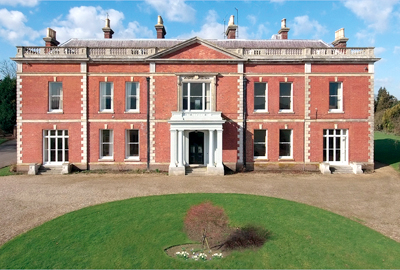
Glebe House
Bayton, Kidderminster, Worcestershire
Owned by Lavinia Marsden-Smedley
Bought for £6,500 in 1960, now on the market through Strutt & Parker for £1.65 million (01584 873711; www.struttandparker.com)
‘There were dregs of Communion wine in the bottom of bottles in the old broken-down cupboards in the scullery,' says Lavinia Marsden-Smedley, recalling her first visit to the now-handsome, wisteria-clad Georgian vicarage that she has lived in for more than 50 years.
Born and brought up in Bayton, Mrs Marsden-Smedley was fortunate that her father, a member of the parish council, had heard that the bishop planned to sell the vicar's five-bedroom property in the village. However, in 1960, the condition of the house left plenty to be desired.
‘It was in a terrible state. The plaster had come off the ceiling in nearly every room and there were electric cables hanging down everywhere. There was lots of dreary, dark brown paint-but it felt right. The house was crying out to be helped.'
Mr and Mrs Marsden-Smedley redid all the electrics and put in central heating, converted the old scullery into the kitchen, made the old kitchen into the dining room and redecorated throughout. ‘It was quite a big job, but we were young then-it was all lovely fun,' explains Mrs Marsden- Smedley, who enjoyed picking out all the colours and furnishings for the rooms.
‘I'm especially fond of the dark green in the sitting room-my late husband loved it, too. All my happy life has all been bound up in my husband, my family and this house and garden, but it's too big for me now.'
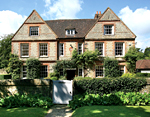
Country Life is unlike any other magazine: the only glossy weekly on the newsstand and the only magazine that has been guest-edited by HRH The King not once, but twice. It is a celebration of modern rural life and all its diverse joys and pleasures — that was first published in Queen Victoria's Diamond Jubilee year. Our eclectic mixture of witty and informative content — from the most up-to-date property news and commentary and a coveted glimpse inside some of the UK's best houses and gardens, to gardening, the arts and interior design, written by experts in their field — still cannot be found in print or online, anywhere else.
-
 Six rural properties with space, charm and endless views, as seen in Country Life
Six rural properties with space, charm and endless views, as seen in Country LifeWe take a look at some of the best houses to come to the market via Country Life in the past week.
By Toby Keel Published
-
 Exploring the countryside is essential for our wellbeing, but Right to Roam is going backwards
Exploring the countryside is essential for our wellbeing, but Right to Roam is going backwardsCampaigners in England often point to Scotland as an example of how brilliantly Right to Roam works, but it's not all it's cracked up to be, says Patrick Galbraith.
By Patrick Galbraith Published
